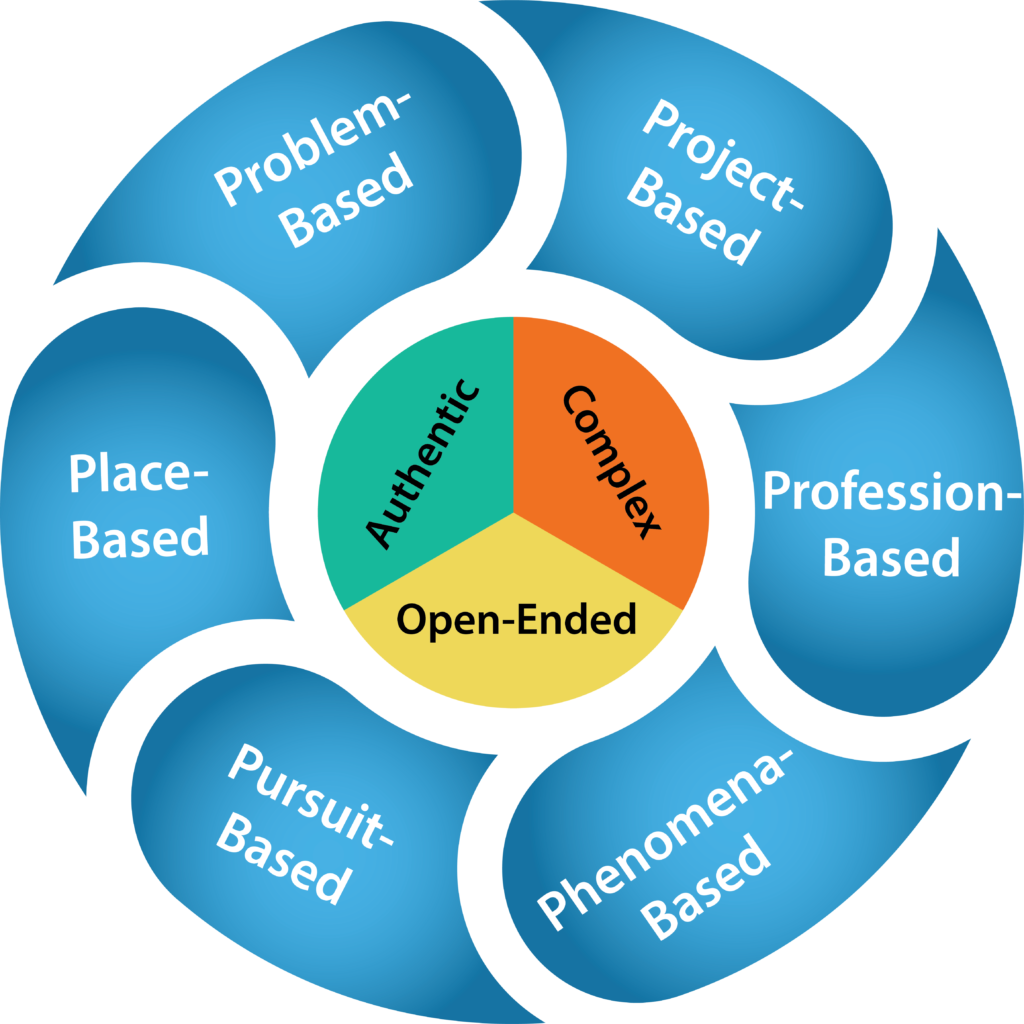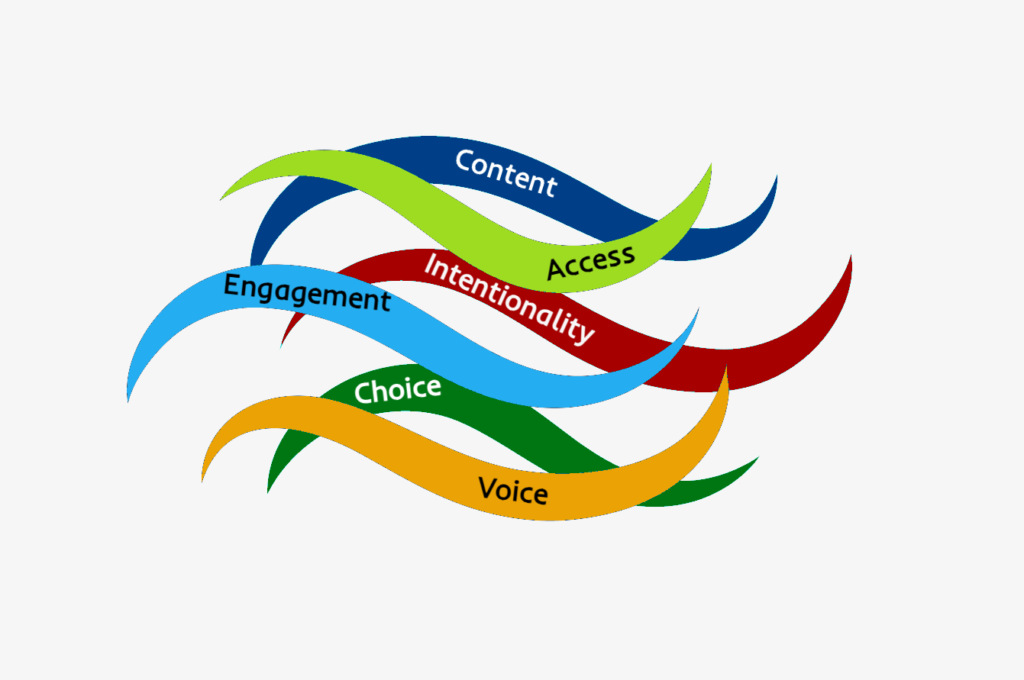Virtual Learning Communities
What if you could bring back more than just good intentions from professional learning experiences?
Our Virtual Learning Communities are different than most online courses in that each VLC has a facilitator who guides the course, provides valuable feedback, and fosters a community of learners. At EdQuiddity, we believe professional learning should:
- Model innovative practices
- Provide new learning
- Have participants design materials to use in school immediately
We now offer an option beyond our in-person professional learning! Online engagement, 25 hours of self-paced engagement, in addition to continual feedback and assistance, and video conference sessions. Work at times convenient for you and have fun challenging your pedagogical thinking.
Only $595 per seat or $4,950 for a 10-pack of seats.
Click the images below for course descriptions.

Design PBLs













Available VLC Schedule
“Work smarter, not harder!” AI tools give us the power to do just that. The possibilities are endless! Explore the opportunities for using AI-driven tools to design rubrics, protocols, instructional activities, and more! Also, generate higher-order questions while engaging with your class and write your talking points for lessons and videos. Learn the nuances of using AI as your instructional design assistant and your power partner in the classroom to meet individual student needs through greater personalized learning.
Syllabus:
- Understanding different aspects of AI and how it can look in your classroom
- Leveraging AI as a thought partner in instructional design to support your diverse student population
- Exploring AI tools and resources to support building executive function and SEL skills
- Leveraging AI to design activities, leveled facilitation questions, and more
Access to MyQPortal is included for all participants while enrolled in the VLC.
Syllabus:
- Designing activity lists that offer students required activities, choice activities (offering more than one way to build a concept or skill), and optional activities (offering extension opportunities to those who are advanced) from a brainstormed scaffold for learning
- Developing facilitation grids, laying out skills and concepts to assess student learning as the teacher facilitates instruction
- Designing facilitation questions to move students to higher-order thinking
- Understanding the role of the Four Types of Formative Assessment to support progress monitoring and growth
- Creating a transfer task as a venue for students to apply, or “transfer,” their learning from an authentic PBL unit to a new real-world context
This course will use Dr. Nancy Sulla’s book Students Taking Charge as a resource. The assigned book must be purchased in advance. Access to MyQPortal is included for all participants while enrolled in the VLC.
Grounded in IDE Corp.’s 7 Essential Elements for ELL Support, this course equips educators with practical scaffolding strategies to enhance English Language Learners’ (ELLs) comprehension and engagement. Participants will explore structured supports while providing students with independent learning resources through differentiated instruction to create inclusive learning environments that foster academic success and language development.
Syllabus:
- Explore IDE Corp.’s 7 Essential Elements for ELL Support, understand language proficiency levels, and examine the role of scaffolding in content and language development.
- Design instructional activities and resources to support ELLs.
- Design discussion prompts to foster academic conversations and structured writing activities while embedding language supports into lessons.
- Explore differentiated strategies to promote independent learning and engagement.
- Adapt scaffolding strategies based on assessments, and develop a scaffolded lesson plan for immediate classroom use.
Syllabus:
- Exploring and developing strategies to help students manage and self-regulate in any learning environment (inclusion, self-contained, or other)
- Gaining strategies and structures to support differentiated student engagement
- Developing purposeful opportunities for students to self-assess and reflect, as well as to support students’ executive function and social-emotional learning
- Exploring opportunities to build a learning community with parents, caregivers, aides, and/or paras to create an optimal learning environment
- Deconstructing your standards to identify the power standards and develop maps to connect your power standards to related content
- Generating related problems to drive instruction through the power standards
- Exploring formative and summative assessment strategies to encourage a data-driven environment that pushes students to higher achievement
Participants in this course will use Reinventing the Classroom Experience by Dr. Nancy Sulla as a resource. The assigned book must be purchased in advance. Access to MyQPortal is included for all participants while enrolled in the VLC.
Syllabus:
- Developing formative assessments across four categories: temperature gauges, breakpoint assessments, student-directed assessments, and comprehensive assessments
- Using formative assessment data to differentiate instructional activities
- Using formative assessment data to drive facilitation in any environment
- Designing formative assessment grids to allow participants to easily collect and track assessment data from students working in class and remotely
Participants in this course will use Dr. Nancy Sulla’s book Reinventing the Classroom Experience as a resource. The assigned book must be purchased in advance. Access to MyQPortal is included for all participants while enrolled in the VLC.



 In this course, participants will leverage choice and technology to provide students with the ultimate differentiated learning environment. They will develop differentiated digital activity lists rooted in rigorous instruction that offer multiple ways to learn and apply content. Participants will explore autonomy, purpose, and mastery as motivators in all learning environments. They will design differentiated activity lists to put students in charge of their own learning, creating a structure that allows students to make decisions within a structured framework. Making informed decisions is an essential life skill that teachers can support with intentional classroom practices.
In this course, participants will leverage choice and technology to provide students with the ultimate differentiated learning environment. They will develop differentiated digital activity lists rooted in rigorous instruction that offer multiple ways to learn and apply content. Participants will explore autonomy, purpose, and mastery as motivators in all learning environments. They will design differentiated activity lists to put students in charge of their own learning, creating a structure that allows students to make decisions within a structured framework. Making informed decisions is an essential life skill that teachers can support with intentional classroom practices. Participants in this course will use Reinventing the Classroom Experience by Dr. Nancy Sulla as a resource. The assigned book must be
Participants in this course will use Reinventing the Classroom Experience by Dr. Nancy Sulla as a resource. The assigned book must be